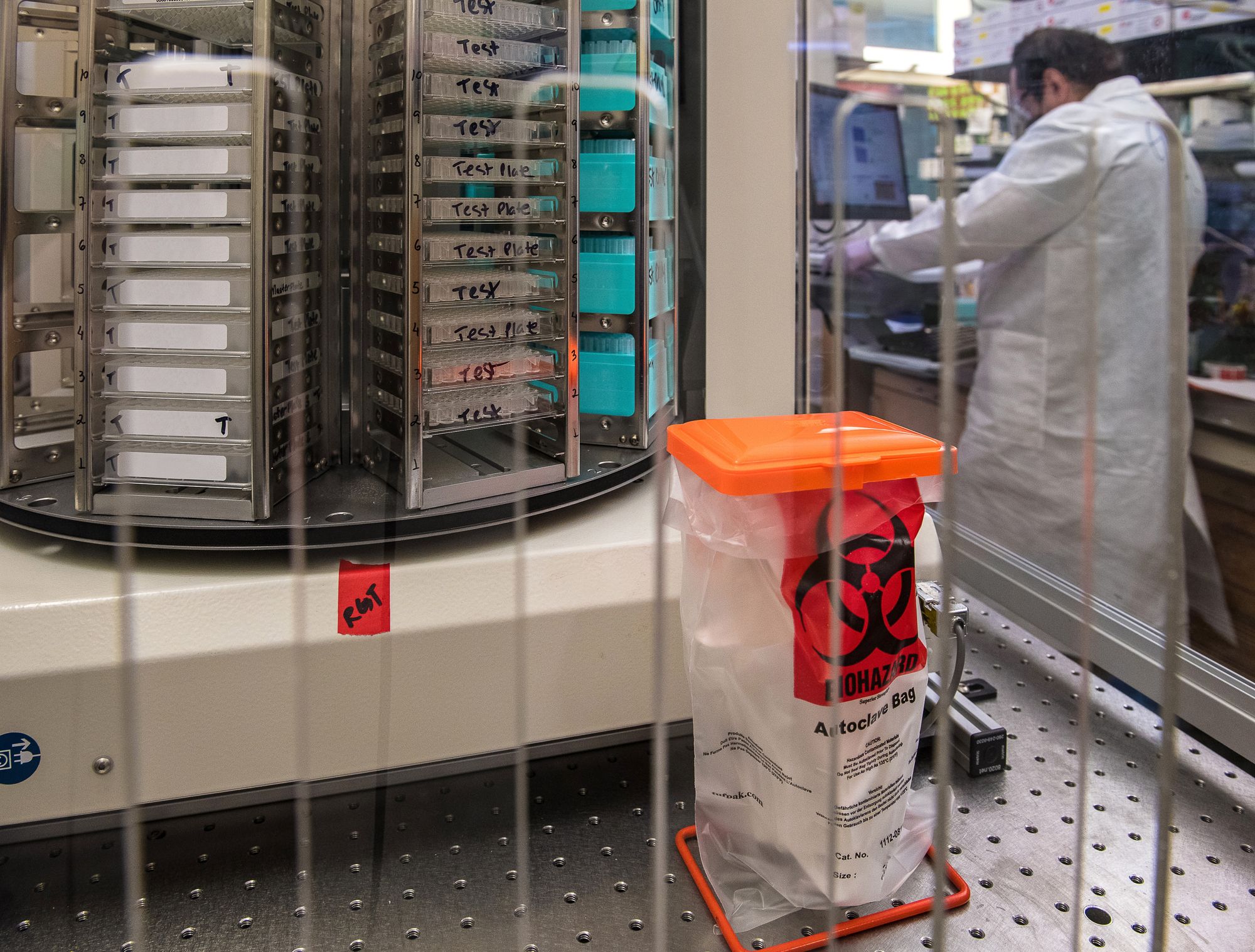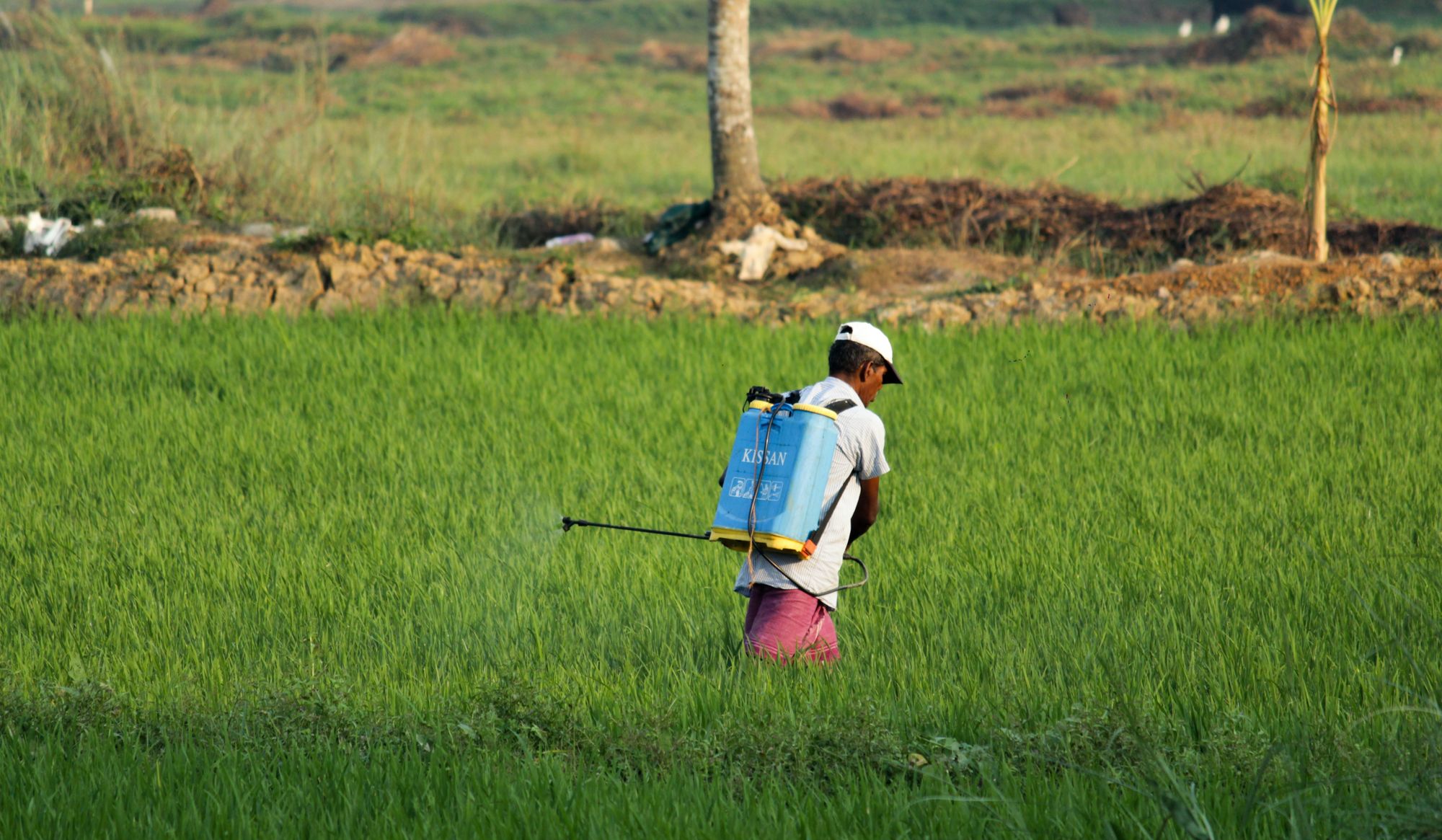Do you know what's more annoying than a mosquito buzzing around your ear at night? It's the feeling of being unable to get rid of them no matter what you do. That's where pest control chemical products come in handy. However, as a manufacturer of these products, you might be struggling to reach the widest possible audience.
The pest control industry is a vital part of the US economy, estimated at $9.4 billion in 2020. The industry provides essential services to homes, businesses, and communities, helping protect them from pests' harmful effects.
As a pest control chemical product manufacturer, it's crucial to have an effective marketing and advertising strategy in place to stand out from the competition.

In this article, we'll explore some of the most effective ways to reach a broad audience for your products. We'll look at the latest trends in marketing, including digital and social media, as well as traditional advertising channels such as print and radio.
By the end of this article, you'll have a comprehensive understanding of how to reach the widest possible audience for your pest control chemical products. With the right strategies in place, you'll be able to increase brand awareness, generate leads, and ultimately increase sales.
So, let's dive in and explore the best ways to market your products to the masses.
- Importance of Market Research in Pest Control Chemical Product Marketing
- Creating a Brand Identity for Your Pest Control Chemical Products
- Understanding Your Target Audience
- Pricing Strategies for Pest Control Chemical Products
- Promoting Your Pest Control Chemical Products on Social Media
- Building Relationships with Influencers in the Pest Control Industry
- Search Engine Optimization (SEO) for Pest Control Product Websites
- Role of Sustainability in Pest Control Chemical Product Marketing
- Conclusion
- Key Takeaways
Importance of Market Research in Pest Control Chemical Product Marketing
Market research is an essential tool for companies in the pest control chemical product market to make informed decisions about their marketing strategies. The pest control chemical product market is highly competitive, with many players vying for a share of the market.
- Market research helps companies to understand their target market better. This includes identifying the needs and wants of customers, as well as their purchasing habits.
- Companies can tailor their marketing strategies to appeal to these customers by understanding the target market. This can include product development, pricing strategies, and advertising campaigns.
- Market research can also help companies identify pest control chemical product market trends. For example, a company may notice that there is an increasing demand for environmentally friendly pest control products.
- The market research also involves analyzing the competition. Companies can use this information to identify their strengths and weaknesses compared to other players in the market.
- The market research also helps companies to develop pricing strategies for their products. This includes understanding the pricing of similar products in the market and the willingness of customers to pay a specific price for a product.
Creating a Brand Identity for Your Pest Control Chemical Products
Creating a strong brand identity is essential for any business, including those in the pest control chemical industry. A well-crafted brand identity helps differentiate your product from the competition and enables customers to recognize and remember your product easily.
Here are some key considerations when creating a brand identity for your pest control chemical products:
Define Your Unique Selling Proposition (USP): Your USP is what sets your product apart from the competition. Determine what makes your product different and emphasize those unique features and benefits in your branding efforts.
Develop a Memorable Brand Name: Choose a brand name that is easy to pronounce, spell, and remember. Consider using words that are related to your industry or products to help establish a connection with potential customers.
Create a Strong Logo: Your logo is the visual representation of your brand and should be recognizable and memorable. Consider working with a professional graphic designer to create a logo that accurately reflects your brand and appeals to your target market.
Develop a Brand Voice and Messaging: Your brand voice and messaging should align with your USP and be consistent across all marketing materials, including packaging, advertising, and social media. Consider the tone and language that best resonates with your target market and tailor your messaging accordingly.
Utilize Packaging Design to Stand Out: Packaging design plays a crucial role in attracting customers to your product. Consider using eye-catching colors, bold fonts, and clear messaging on your packaging to communicate your brand identity and differentiate your product from the competition.
Leverage Social Media to Build Brand Awareness: Social media is a powerful tool for building brand awareness and connecting with potential customers. Develop a social media strategy that aligns with your brand voice and messaging, and consistently engage with your followers to build brand loyalty.
Monitor and Refine Your Branding Efforts: Regularly monitor the effectiveness of your branding efforts and make adjustments as needed. Solicit customer feedback and use it to refine your messaging, packaging, and marketing strategies better to meet the needs and preferences of your target market.
Understanding Your Target Audience
Identifying the Target Audience
- Homeowners: Homeowners are the primary target audience for pest control products, as they are concerned about the presence of pests in their homes. Homeowners may be concerned about pests such as ants, roaches, and rodents. They are more likely to purchase products that are safe and easy to use.
- Commercial Businesses: Commercial businesses, such as restaurants and hotels, also require pest control products to maintain a clean and healthy environment for their customers. These businesses require products that are effective but also safe for use around food and people.
- Agricultural Industries: Agricultural industries require pest control products to protect their crops from insects and other pests. These industries are concerned about the effectiveness of the product but also its impact on the environment and their workers.
Factors Influencing Purchasing Decisions
- Safety: Safety is a critical factor in purchasing pest control products. Consumers want products that are safe for use around people and pets. Products that are labeled as "natural" or "organic" may appeal to consumers concerned about the safety of chemicals.
- Effectiveness: The effectiveness of the product is also an essential factor in the purchasing decision. Consumers want products that are proven to eliminate pests and prevent their return. They may be willing to pay more for products that have a proven track record.
- Price: Price is another critical factor in purchasing pest control products. Consumers may be willing to pay more for safer or more effective products, but they still want an affordable product.
- Convenience: Convenience is also an essential factor in the purchasing decision. Consumers want products that are easy to use and require minimal effort. Products that are labeled as "quick" or "easy" may appeal to consumers looking for a hassle-free solution.
Pricing Strategies for Pest Control Chemical Products
Pricing strategies are critical in determining the success of any business, including those that sell pest control chemical products. It would help if you considered several factors before deciding on the pricing strategy for your products. This section will explore some of the key pricing strategies for pest control chemical products.
Cost-plus pricing strategy
A cost-plus pricing strategy is a pricing method that involves adding a markup to the cost of production. This markup is the profit margin that the business owner wants to earn.
This pricing strategy is relatively straightforward and is used by many businesses. However, ensuring that the markup is reasonable and competitive in the market is essential.
Competition-based pricing strategy
Competition-based pricing strategy involves setting prices based on the prices of similar products offered by competitors in the market. This pricing strategy helps the business remain competitive and attract customers willing to pay more for it.
To use this strategy, companies need to identify the unique value proposition of their products and communicate this value to their target audience effectively.
Bundling pricing strategy
A bundling pricing strategy involves offering multiple products or services at a discounted price. This strategy is effective in increasing sales and customer loyalty.
For example, a business may offer a pest control chemical product with a complementary product, such as a pest trap, at a discounted price. This strategy not only increases sales but also provides customers with added value.
Dynamic pricing strategy
Dynamic pricing strategy involves setting prices based on market demand and supply. In this strategy, prices may fluctuate based on factors such as seasonality, competition, and demand.
For example, during the summer months, when pest infestations are high, a business may increase the prices of its products. Similarly, during the off-season, prices may be reduced to attract customers.
When deciding on a pricing strategy for your pest control chemical products, it is essential to consider the cost of production, competition, value proposition, and market demand. It is also vital to review and adjust pricing strategies regularly to ensure that they remain competitive and profitable.
Promoting Your Pest Control Chemical Products on Social Media
In today's digital age, social media has become essential for businesses to promote their products and services. Pest control chemical product manufacturers can also leverage social media to reach out to their potential customers, create brand awareness and increase sales.
Here are some tips on how to promote your pest control chemical products on social media:
- Choose the right social media platforms: Before you start promoting your pest control chemical products on social media, you need to identify the social media platforms where your target audience is active. Facebook, Twitter, and Instagram are some of the popular social media platforms that you can consider.
- Create a content strategy: Once you have identified the social media platforms, you need to create a content strategy. Your content should be informative and engaging and should offer value to your potential customers. You can share tips on pest control, post infographics, and videos, and provide information on the benefits of your products.
- Use visual content: Visual content, such as images and videos, are more engaging and can help you grab the attention of your target audience. You can create videos demonstrating the use of your products, share images of pests and their impact on health and property, and share before and after images of pest control treatments.
- Use hashtags: Hashtags can help you reach a wider audience on social media. Use relevant hashtags in your posts to increase the visibility of your content.
- Engage with your audience: Social media is a two-way communication channel, and you need to engage with your audience to build a relationship with them. Respond to their queries, comments, and feedback promptly, and use their feedback to improve your products and services.
- Run contests and promotions: Running contests and promotions can help you increase engagement and generate buzz around your products. You can run a photo contest where your followers can share their pest control stories or offer discounts and giveaways to your followers.
- Collaborate with influencers: Collaborating with influencers in the pest control industry can help you reach a wider audience and create trust among your potential customers. Identify the influencers in your industry and reach out to them for collaborations.
Building Relationships with Influencers in the Pest Control Industry
In the pest control industry, influencers can be a valuable resource to build awareness of your brand and products. Here are some key points to consider when building relationships with influencers in the pest control industry:
Identify relevant influencers: The first step is identifying relevant influencers in the pest control industry. Look for influencers who have a large following and a strong engagement rate with their followers.
Also, look for influencers who are passionate about pest control and have experience with different products and solutions. Use social media tools to search for relevant keywords and hashtags to find potential influencers.
Build genuine relationships: Building relationships with influencers is about building trust and rapport. It's important to approach influencers genuinely, not just as a means to promote your products. Start by engaging with their content and showing interest in their work. Share their posts, leave comments, and provide value to their audience.
Collaborate on content: Collaborating on content is a great way to build relationships with influencers. You can offer them samples of your products for them to try, and they can create content around their experience with your products.
This can include product reviews, tutorials, and demonstrations. By working together on content, you can reach a wider audience and build credibility for your brand.
Offer incentives: Offering incentives can motivate influencers to work with your brand. This can include offering them a commission for every sale made through their unique referral link, providing them with exclusive discounts or offers, or even paying them for their work.
Make sure that any incentives offered are fair and in line with industry standards.
Measure and analyze the results: Measuring and analyzing the results of your influencer campaigns is essential to understand the impact of your efforts.
Use tools to track metrics such as engagement rates, click-through rates, and conversion rates to evaluate the success of your campaigns. Use this data to optimize your future influencer campaigns.
Search Engine Optimization (SEO) for Pest Control Product Websites
Search Engine Optimization (SEO) is a crucial aspect of digital marketing that helps businesses to increase their online visibility and attract more potential customers. In the pest control industry, it's essential to have a strong online presence since most customers search for pest control products and services on the internet.
Therefore, it's essential to have an effective SEO strategy for your pest control product website. Here are some tips on how to optimize your website for search engines:
- Conduct keyword research: Before optimizing your website, you need to identify the keywords your target audience is searching for. Use keyword research tools to find relevant keywords that you can use in your website content.
- Optimize your website structure: Your website structure should be user-friendly and easy to navigate. Use a simple and clear menu structure to make it easy for users to find the necessary information.
- Create high-quality content: Content is the backbone of your website. Create informative, engaging, high-quality content incorporating the keywords you identified during your research. Make sure your content is unique, helpful, and relevant to your target audience.
- Use meta tags: Use meta tags to provide search engines with information about your website. Use relevant keywords in your title tags, meta descriptions, and header tags to help search engines understand the content of your pages.
- Build high-quality backlinks: Backlinks are a crucial factor in SEO. They signal to search engines that other websites consider your content valuable and relevant. Focus on building high-quality backlinks from relevant and authoritative websites.
- Optimize for mobile: More than half of all internet traffic comes from mobile devices, so optimizing your website for mobile users is essential. Make sure your website is responsive and has a fast loading time on mobile devices.
- Monitor and analyze your website performance: Use tools like Google Analytics to monitor your website traffic, track your SEO performance, and identify areas for improvement.
Role of Sustainability in Pest Control Chemical Product Marketing
Here are some key points about the role of sustainability in pest control chemical product marketing:
Sustainable production methods: One of the most significant ways companies can demonstrate their commitment to sustainability is by adopting sustainable production methods.
This includes minimizing waste, reducing energy consumption, and using eco-friendly materials in manufacturing. Businesses prioritizing sustainability in their operations can use this as a selling point to attract environmentally conscious consumers.
Green Certification: Obtaining green certification for pest control chemical products is another way to communicate sustainability efforts to consumers.
Certifications like the EPA's Safer Choice label indicate that a product has been rigorously tested and verified as safe for people and the environment. Having this label on a product can increase consumer trust and willingness to purchase.
Biodegradable products: Many pest control chemical products contain harsh chemicals that can harm the environment. However, more and more companies are developing biodegradable products designed to break down naturally in the environment.
These products are becoming increasingly popular, with consumers looking for ways to reduce their environmental impact.
Sustainability messaging: Companies must make it a core part of their messaging to communicate a commitment to sustainability. This can be done through marketing materials, social media posts, and other consumer communications.
By clearly articulating sustainability efforts, businesses can build brand loyalty among consumers who value sustainability.
Environmental partnerships: Many pest control chemical product companies partner with environmental organizations to demonstrate their commitment to sustainability.
These partnerships can take many forms, from financial contributions to joint sustainability initiatives. These collaborations can also provide valuable exposure for both the company and the partner organization.
Recycling programs: Pest control chemical product companies can demonstrate their commitment to sustainability by implementing recycling programs for product packaging. This reduces waste and provides a convenient way for consumers to dispose of empty product containers.
How Deskera Can Assist You?
Deskera MRP allows you to closely monitor the manufacturing process. From the bill of materials to the production planning features, the solution helps you stay on top of your game and keep your company's competitive edge.

Deskera ERP and MRP system can help you:
- Manage production plans
- Maintain Bill of Materials
- Generate detailed reports
- Create a custom dashboard
Deskera ERP is a comprehensive system that allows you to maintain inventory, manage suppliers, and track supply chain activity in real-time, as well as streamline a variety of other corporate operations.
Deskera Books enables you to manage your accounts and finances more effectively. Maintain sound accounting practices by automating accounting operations such as billing, invoicing, and payment processing.
Deskera CRM is a strong solution that manages your sales and assists you in closing agreements quickly. It not only allows you to do critical duties such as lead generation via email, but it also provides you with a comprehensive view of your sales funnel.
Deskera People is a simple tool for taking control of your human resource management functions. The technology not only speeds up payroll processing but also allows you to manage all other activities such as overtime, benefits, bonuses, training programs, and much more. This is your chance to grow your business, increase earnings, and improve the efficiency of the entire production process.
Conclusion
Reaching the widest possible audience for your pest control chemical products requires a multifaceted approach that includes understanding your target market, creating effective marketing strategies, and utilizing various distribution channels.
It is essential to conduct thorough market research and identify the pain points of your target customers to create products that meet their needs. Developing a strong brand identity that resonates with your target market can help differentiate your products from competitors and build customer trust.
It is also essential to consider the regulatory environment and ensure compliance with local and national regulations for pest control chemical products. This can include obtaining necessary licenses and certifications and adhering to labeling and packaging requirements.
Continuously monitoring market trends and customer feedback can help you stay ahead of the competition and adapt to changing customer needs. Gathering customer feedback and incorporating their suggestions into product development and marketing strategies can help build brand loyalty and generate positive word-of-mouth.
Key Takeaways
- Identifying the target audience is crucial to creating a successful marketing strategy for pest control chemical products.
- The use of social media platforms can be an effective way to reach a wider audience and engage with potential customers.
- Collaborating with influencers and industry experts can help increase brand awareness and credibility.
- Developing educational content, such as blog posts and videos, can position the company as a thought leader and attract a wider audience.
- Creating an email marketing campaign can be a cost-effective way to reach and keep many potential customers engaged.
- Participating in industry events and trade shows can provide an opportunity to network with potential customers and showcase the company's products.
- Using search engine optimization (SEO) techniques to improve the company's website ranking can increase visibility and attract a wider audience.
- Incorporating customer reviews and testimonials into marketing efforts can help build trust and credibility with potential customers.
Related Articles













